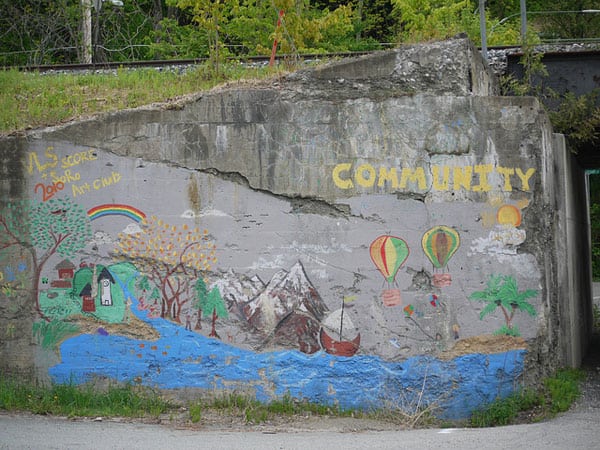
July 17, 2018; GreenBiz
At NPQ, we have written regularly about the shortfalls of economic development that relies on tax abatements and other forms of economic incentive payments. As NPQ’s Derrick Rhayn wrote earlier this week, “Collectively, cities and states in the US spend upwards of $80 billion annually on tax incentives, an amount equivalent to the GDP of the state of Hawaii…[yet] some research shows that incentives have little to no impact on job creation at all.” But what is the alternative? Writing in GreenBiz, Michael Fortunato and Bruce Balfour, two economic development consultants, identify three key principles for engaging in homegrown economic development, aimed at especially for those seeking to revitalize the economies of small towns. These are:
1. Be more than a developer of places. You will have to be a developer of communities.
2. Instead of revitalizing only buildings, you must also revitalize relationships.
3. With no economic momentum in the community, if you want to sail, you will have to bring your own wind.
“These techniques are not new,” Fortunato and Balfour explain. “In fact, they have more in common with life in the early United States than they do with life in modern times. Back then, techniques revolved around relationships and doing for one another in very strategic ways. Blending them with modern approaches and modern situations makes them feel quite innovative, and we would like to see more of them in common use by developers across the globe.”
Sign up for our free newsletters
Subscribe to NPQ's newsletters to have our top stories delivered directly to your inbox.
By signing up, you agree to our privacy policy and terms of use, and to receive messages from NPQ and our partners.
In terms of tactics and strategy, the community economic development toolkit that they advocate employing contains four elements: 1) partnerships, 2) community wealth building strategies, 3) blending of multiple strategies (which they call “hybridizing”) and 4) self-sustaining strategies.
Fortunato and Balfour outline each of these strategies. For instance, employing partnerships requires the developer to be a “catalyzing force.” “Rather than advancing your own vision,” they say, “find out what others in the community want to see.” The community spirit that is generated “can be written right into the by-laws of your project’s business entity, ensuring strong connections with local organizations and possibly local oversight.”
As for building community wealth, the key, Fortunato and Balfour explain, is to “enhance community involvement and defray risk.” For example, cooperatives are beneficial because they bring about “many owners, less risk.” Part of the reason for the lower risk, they add, is that “Co-op businesses draw their membership directly from the community, providing a loyal customer base.” An example of this is the craft brewing co-op of Ronan, Montana that NPQ profiled this past January. Other forms of community wealth building they mention include community land trusts, commons area preservation, and community-supported agriculture.
Such community-based “strategies really gain their power when they are blended effectively,” Fortunato and Balfour add. One reason for blending strategies is to reduce the risk of failure. As Fortunato and Balfour explain, single-use projects create the “possibility that the project could fail, taking all investment with it. This is especially destructive in a small town. However, by launching affordable housing jointly with a food hub and a food entrepreneurship incubator, the risk of failure of one project is more likely to be buffered by the other two.”
The last point that Fortunato and Balfour emphasize is to avoid reliance “on external grant funding that is not directly controlled by the community, as this brings external risk to the table.” Fortunato and Balfour explain that, “A community may really want a food hub, and may need affordable housing.” They add that, “If your project must be launched in segments, always begin with the highest profit potential activity first. This can then support the other activities as they all grow at different rates. Thus, the commercial kitchen can kick-start the launch of the food hub, opening access to local food, which enhances the commercial kitchen incubator. This power duo then can be used to launch affordable housing (a low-profit venture), which can house more potential food entrepreneurs, and so on.”
Fortunato and Balfour conclude by stating their hope that “these and other innovative techniques will become more commonplace in economic development circles.” Often, they add, “the key to reconstituting community life is …building more diverse projects at a smaller scale.”—Steve Dubb













